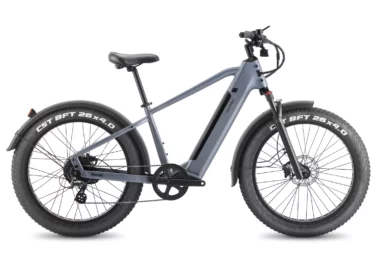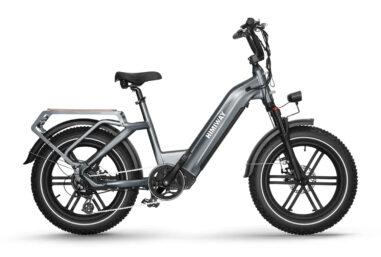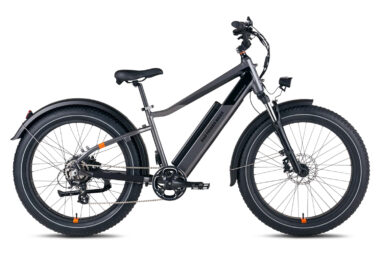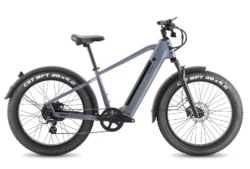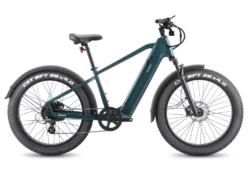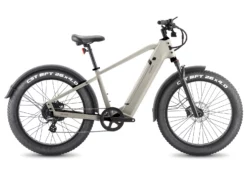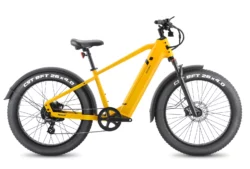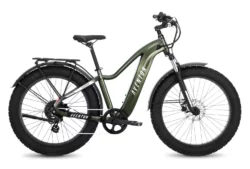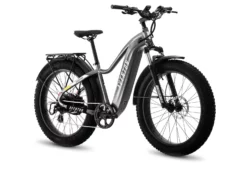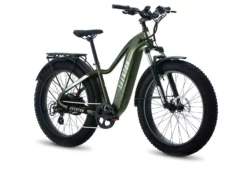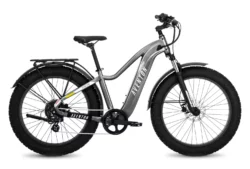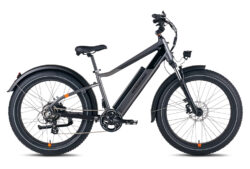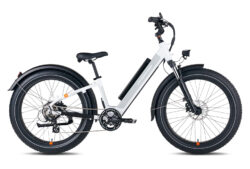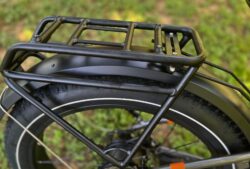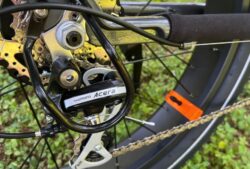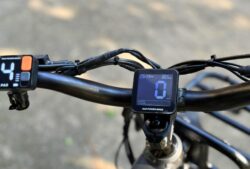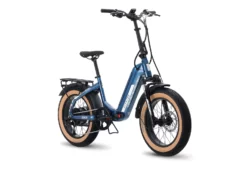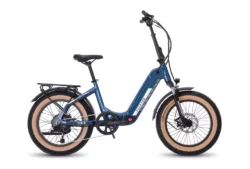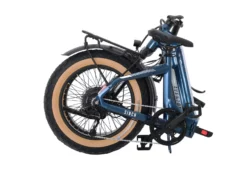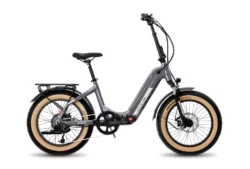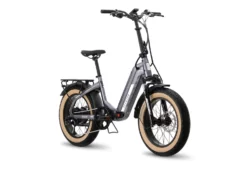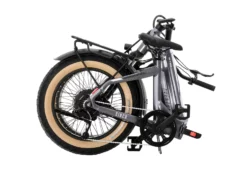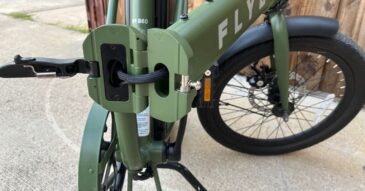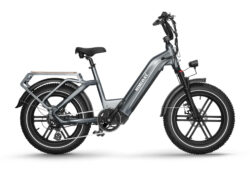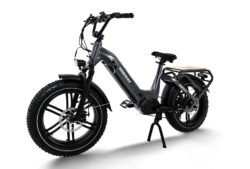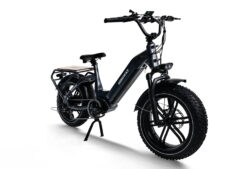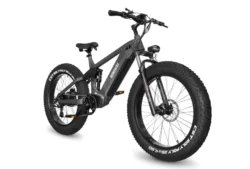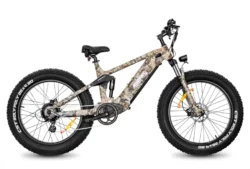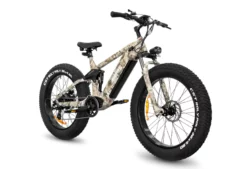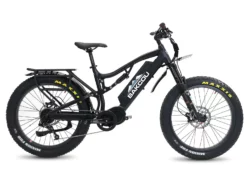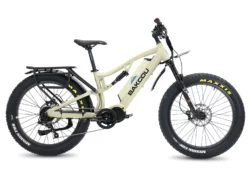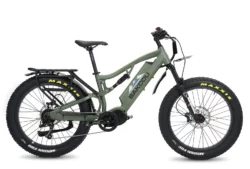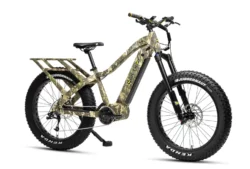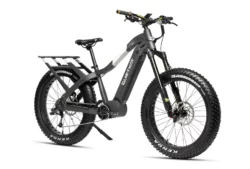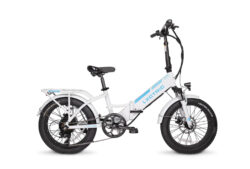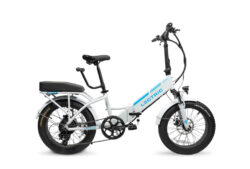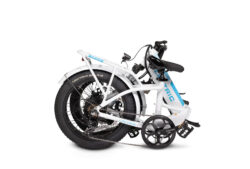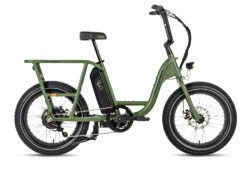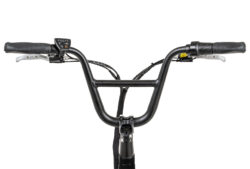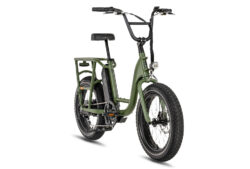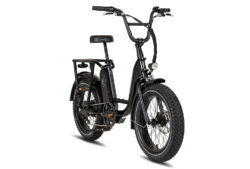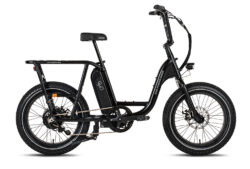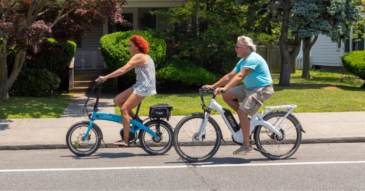How We Review E-Bikes
At the heart of our reviews is a commitment to delivering the most precise and reliable information possible. That’s why we don’t just stop at desk research; we hit the road, trail, (or both in this case) and put these e-bikes through their paces. Our standardized evaluations, including rigorous hill climb and range tests, yield unbiased data, forming the foundation for our ratings on a universal 5-star scale.
When securing a physical model proves challenging, our dedicated team of researchers steps in. These aren’t your run-of-the-mill researchers — they’re seasoned industry experts boasting years of industry experience. They wade through the depths of the internet to unearth the most trustworthy information possible.
For a deeper look into our team and the methodology behind our product research, explore more about us and how we go about our evaluations.
Reviews of Fat-Tire E-Bikes for Sale in 2024
Okay, let’s get down to brass tacks, shall we? Are you ready to meet the trailblazers that are redefining the game? Without further ado, let’s explore the very best in off-road, powered prowess.
The terrain is calling, and one of these bikes is here to help you answer the call.
- Best Class 2 – Velotric Nomad 1
- Best Class 3 Fat-tire E-Bike – Aventon Aventure.2
- Best Budget Fat-tire E-Bike – Rad Power RadRover 6 Plus
- Best Folding Fat-tire E-Bike – Aventon Sinch.2
- Most Comfortable Fat-tire E-Bike – Himiway Big Dog
- Best Full-suspension Fat-tire E-Bike – Himiway Cobra
- Best Long-range Fat-tire E-Bike – Backou Storm
- Best Fat-tire E-Bike for Hunting – QuietKat Apex Pro
- Best Urban Fat-tire E-Bike – Lectric XP 3.0 Step-thru
- Best Fat-tire E-Bike for Seniors – Rad Power RadRunner
Best Class 2 Fat-Tire E-Bike
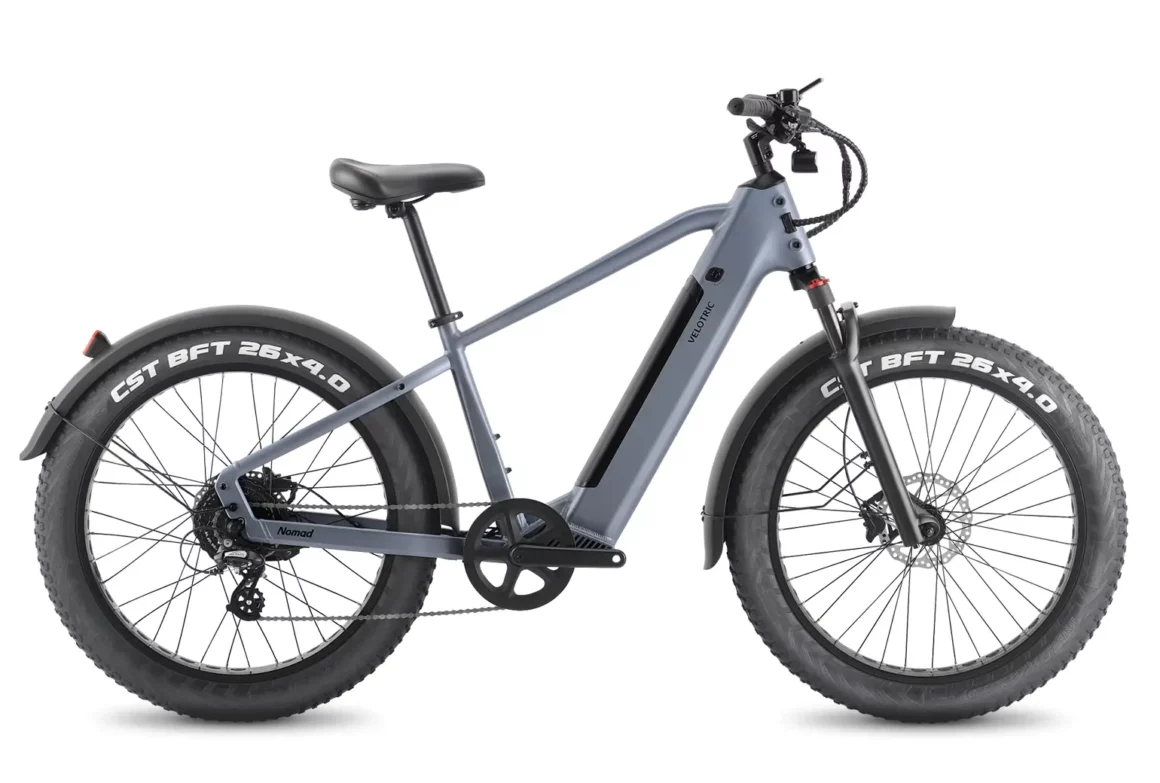
Velotric Nomad 1
What We Like
- The powerful 750W motor and 75nm of torque help on steep hills
- The 440 lb payload capacity means this can haul a ton of cargo.
- The wide tires, 100mm of travel from the front fork, and comfort saddle provide a comfortable riding experience.
- The riding position is slightly leaned forward but not overly aggressive.
- Step-through model is available for riders with mobility concerns
- Diverse color options
What We Don't Like
- Lesser-known components may affect long-term maintenance
- Warranty coverage on battery and components is relatively short
Overview of the Velotric Nomad 1
The Velotric Nomad 1 asserts itself in the realm of electric fat-tire bikes as a practical, all-terrain option, steering clear of the rugged, outdoorsy facade. Tailored for the urban jungle rather than mountainous terrains, this entry-level Class 2 e-bike ensures a comfortable ride with its sturdy frame, catering to riders seeking confidence amid bustling city roads.
Whether navigating city streets or weaving through bumper-to-bumper traffic, the Nomad 1 showcases its versatility. The optional rear or front rack seamlessly transforms it into a high-quality utility e-bike, ideal for shopping or daily commuting. Remarkably, with a payload capacity of 440 lbs, it accommodates riders of diverse shapes and sizes, along with their cargo.
Bottom Line
The Velotric Nomad 1 boldly claims its position as the best Class 2 fat-tire e-bike, offering a triumphant blend of power, versatility, and comfort. Tailored for urban adventurers, its stylish design and all-terrain capabilities make it a prime choice for those seeking a confident ride through diverse landscapes. While exploring the road less traveled, it’s essential to be mindful of throttle limitations based on your state’s regulations as the Nomad 1 can be unlocked to up its top speed to 25 mph. In doing so, the Nomad 1 stands ready to be your ideal companion on the journey ahead.
Be The First To Know
Best Class 3 Fat-Tire E-Bike
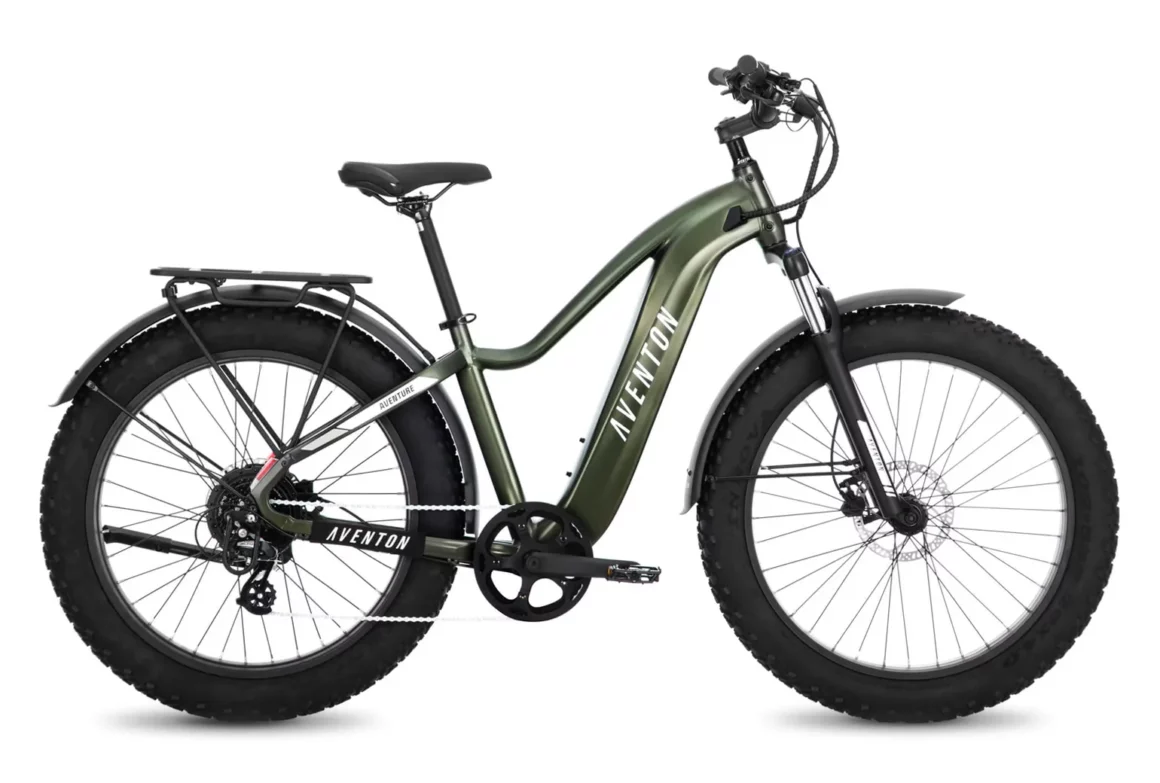
Aventon Aventure.2
What We Like
- 750W rear hub motor gives plenty of oomph to tackle inclines
- 720Wh battery with a 60-mile range
- The torque sensor offers smooth and efficient power delivery for extended range and performance.
- Integrated lights with turn signal functionality make this a great fat-tire e-bike for the city.
What We Don't Like
- The substantial weight of 77 lbs makes this a bike for the garage, not ideal for carrying up or down stairs.
- If road noise bothers you, the knobby tires may be a bit noisy for you.
Overview of the Aventon Aventure.2
Meet the Aventon Aventure.2, a Class 3 capable, fat-tire e-bike priced at a mere $1,799 seamlessly blends power, style, comfort, and freedom.
The Aventure.2 boasts a potent 750W (sustained) and peak power of 1,130W rear hub motor, ready to unleash mayhem on the streets. The torque sensor with four levels of pedal assist elevates the riding experience, turning every pedal stroke into a symphony of power and efficiency. Beyond the flashy features, the Aventure.2 boasts Aventon’s commitment to quality and comes in two frame styles – Step-Through and Step-Over – catering to many different rider sizes and preferences.
The Aventure.2 is not just about power; its 4-inch-wide knobby tires, paired with an 80mm front suspension, help you easily conquer various terrains. The attention to detail seems to be never-ending with the Aventure.2. Accompanied by integrated lights with turn signal functionality, a USB port for device charging, and rear brake lights, this bike has something for everyone.
Bottom Line
To sum it up, the Aventon Aventure.2 stands not just as an electric bike but as a symbol of freedom, power, and style on two wheels. Priced at a compelling $1,599, this Class 3 capable e-bike transcends traditional transportation and beckons you into a lifestyle of exploration.
With its powerful motor, sleek design, and versatile features, the Adventure.2 is more than a bike; it’s an invitation to redefine the boundaries of e-biking. So, gear up and hit the road with the Aventon Adventure.2 under your shoes!
RadRunner 2
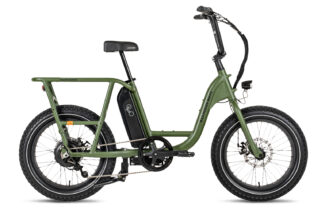
The Rad Power Bikes RadRunner 2 earns its second-place position among Class 3 fat-tire e-bikes with a mighty 750W motor, comfortable design, and versatile upgrade options, making it an ideal choice for utility-focused riders.
While its practical aesthetics prioritize function, the Aventon Aventure.2 clinches the top spot, offering higher speeds and a more visually appealing design, combining style and performance for a superior riding experience in this category.
The RadRunner 2’s practical features and comfort make it a strong contender, particularly for those prioritizing utility and functionality over aesthetic preferences.
Best Budget Fat-Tire Electric Bike
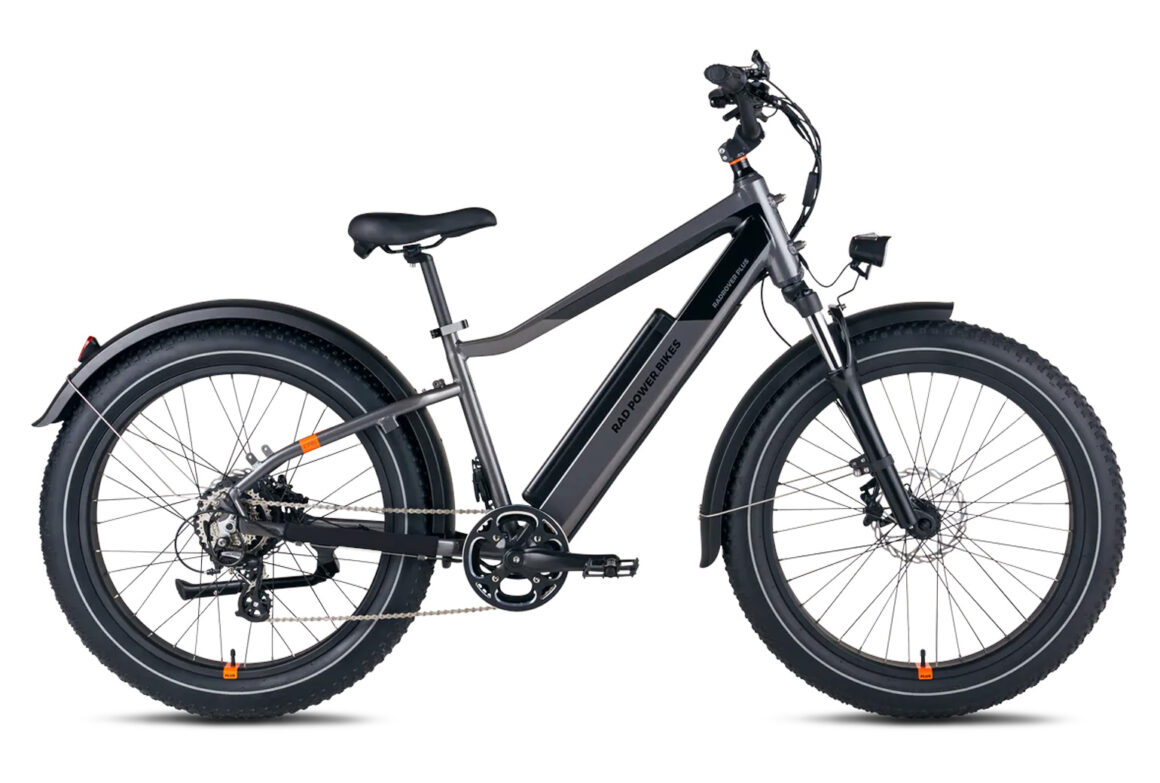
RadRover 6 Plus
What We Like
- Smooth ride with wide tires and 100mm of travel
- Versatile on various terrains makes the RadRover 6 a great city commuter
- High-capacity cargo racks and vast array of accessories available
- Comfortable trekking riding position
- Durable sturdy frame construction
What We Don't Like
- The Rover is a heavy bike at almost 74 lbs
- The 750W motor tends to suck a lot of juice.
Overview of the RadRover 6 Plus
The RadRover 6 Plus from Rad Power Bikes is a fun and powerful e-bike that seamlessly combines versatility and comfort. Whether cruising on gravel trails or navigating through the city’s bumpy roads, this e-bike offers a smooth ride.
The bike’s high-capacity cargo racks and compatibility with a wide range of accessories make it an excellent choice if you’re seeking a bike that can haul some serious cargo. The 4-inch-wide Kenda Juggernaut tires with K-Shield lining provide ample traction on various surfaces, and the 60mm front suspension adds to the comfort when exploring rough roads and trails.
Equipped with hydraulic brakes, the RadRover 6 Plus ensures reliable stopping power, which is important for its substantial weight of 73.4 lbs. The removable 672Wh battery offers convenient charging, and with a range of approximately 45 miles per full charge, it provides ample power for most riders’ needs. The Shimano Acera drivetrain, 7-speed cassette, and a 750W brushless rear hub motor provide a smooth and efficient experience.
Bottom Line
Looking for an affordable and reliable all-weather e-bike that can handle any terrain? The RadRover 6 Plus, priced at $1,399, is an excellent option, particularly for first-timers. Its robust construction, high-capacity cargo racks, and compatibility with various accessories make it a versatile choice for commuting, light trail riding, and around-town activities.
The RadRover 6 Plus combines style, durability, and comfort, making it the best option in the budget fat-tire e-bike category. Just be prepared for its substantial weight, and you’ll have yourself a powerful companion.
Best Folding Fat-Tire E-Bike
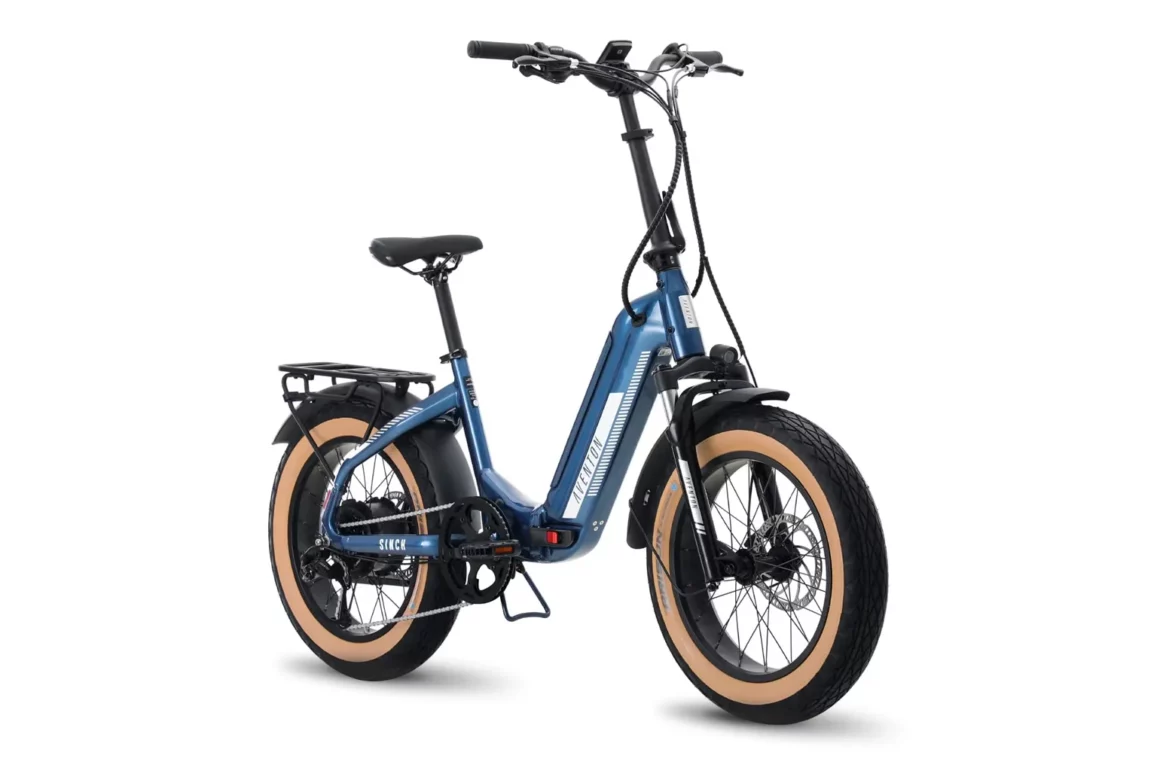
Aventon Sinch.2
What We Like
- Seamless folding for easy portability
- 500W (750W peak) rear-hub motor provides plenty of power
- Integrated brake lights with turn signals makes this a great option for the city
- Step-through frame allows those with mobility issues to mount easily
What We Don't Like
- Heavy at 68 lbs for a foldable bike, might make lifting the Sinch.2 an issue
- Crowded right side of the handlebars may affect overall comfort
- Some components are not name-brand, making long-term maintenance a concern
Overview of the RadRover 6 Plus
The Aventon Sinch.2 is a folding fat-tire e-bike that redefines convenience and performance. Priced at under $2,000, it combines style, power, and practicality. This Class 2 electric bike seamlessly blends into bustling city streets and off-road trails, providing a versatile ride. The Sinch.2’s standout features include a 500W (750W peak) rear-hub motor, a 48V, 14Ah (672Wh) LG cell battery, and a user-friendly folding mechanism for compact portability, making it an ideal companion for commuters and adventure seekers alike.
Bottom Line
In the crowded landscape of folding e-bikes, the Aventon Sinch.2 emerges as a top contender if you’re craving all-terrain escapades and a dynamic, tech-savvy ride. With its inclusive design accommodating heights from 4’11″ to 6’2″, the Sinch.2 invites riders of all sizes to come along for the ride.
Its powerful motor, impressive range, and compact design make it an attractive option as it is adaptable, marrying power with portability. If you’re searching for an e-bike that effortlessly blurs the lines between city streets and off-road trails and can neatly tuck away into your closet, the Aventon Sinch.2 is the ticket.
Interested in Folding E-Bikes?
Most Comfortable Fat-Tire E-Bike
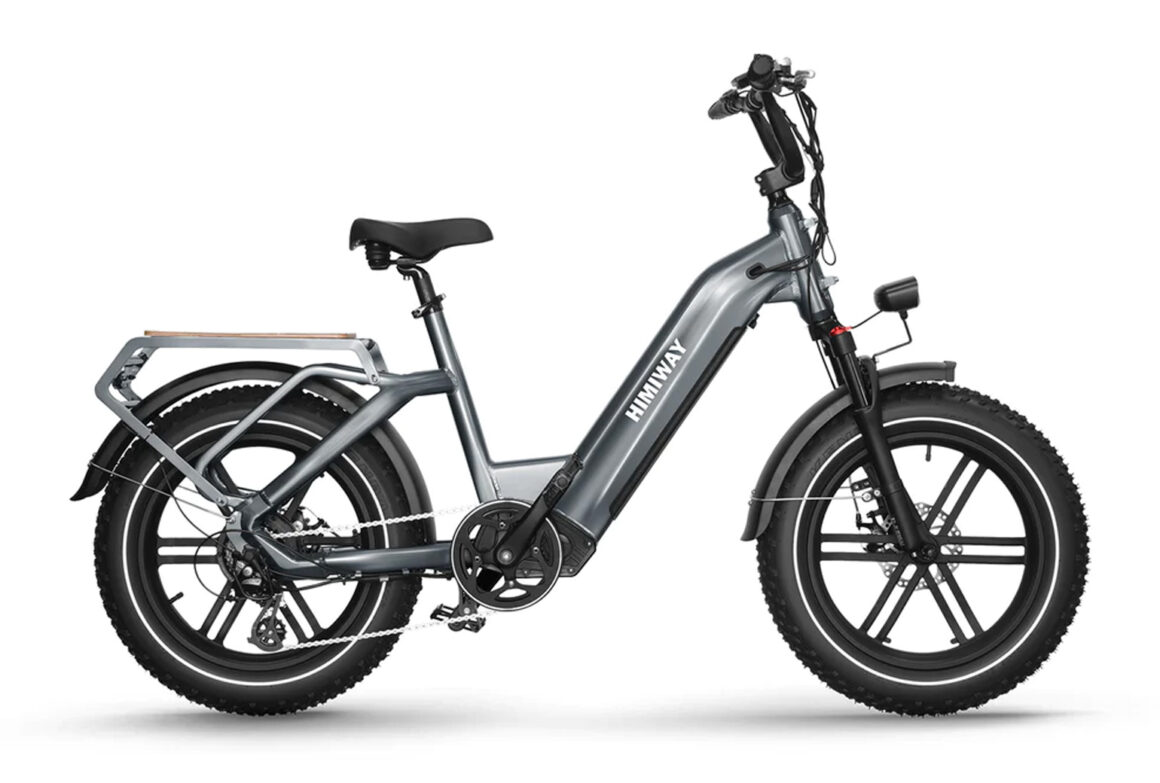
Himiway Big Dog
What We Like
- Strong 750W brushless rear hub motor
- 400 lbs load capacity makes it a great utility bike option
- Great battery life, providing up to 80 miles per charge
- Step-through frame which is great for those with mobility issues
- Bright LCD display with USB charging port to keep your phone charged while riding
What We Don't Like
- May not cater to taller riders
- Motor lags a bit when you start pedaling
- Very heavy at 79 lbs
Overview of the RadRover 6 Plus
The Himiway Big Dog stands out as a premium version of the popular Escape Pro, offering a powerful 750W motor, a robust 6061 aluminum frame, and an impressive 400 lbs load capacity. Priced just $300 higher than its predecessor, the Class 1 Himiway Big Dog provides excellent value for money.
This electric bike seamlessly combines the functionality of a cargo bike with the comfort and style of an urban cruiser, making it an ideal choice for long biking trips, all-terrain adventures, urban commuting, and errands.
The premium aluminum frame not only pumps up its durability but also lends to the Big Dog’s substantial 400 lbs load capacity. The 48V 20Ah Samsung/LG lithium battery, neatly integrated within the frame, offers an extended range and shorter charge time — the result is a clean-looking bike and greater protection against bad weather. Not to mention the 20″x4″ Kenda fat tires, coupled with an 80mm travel fork, ensure you get a comfortable and smooth ride on all sorts of terrain.
Bottom Line
The Himiway Big Dog is a versatile and comfortable e-bike that excels as a cargo bike. With a powerful motor, impressive load capacity, and a design that combines durability with style, the Big Dog offers excellent value for riders seeking functionality and comfort.
While its appearance may not win any awards, its performance and features, including the step-thru frame, longer battery life, and available accessories, make it a practical choice for those who prioritize utility and comfort over flashy looks.
If you’re searching for an e-bike that can handle both daily errands and weekend adventures with ease, take a closer look at the Himiway Big Dog. You’ll be glad you did.
Best Full-Suspension Fat-Tire Electric Bike
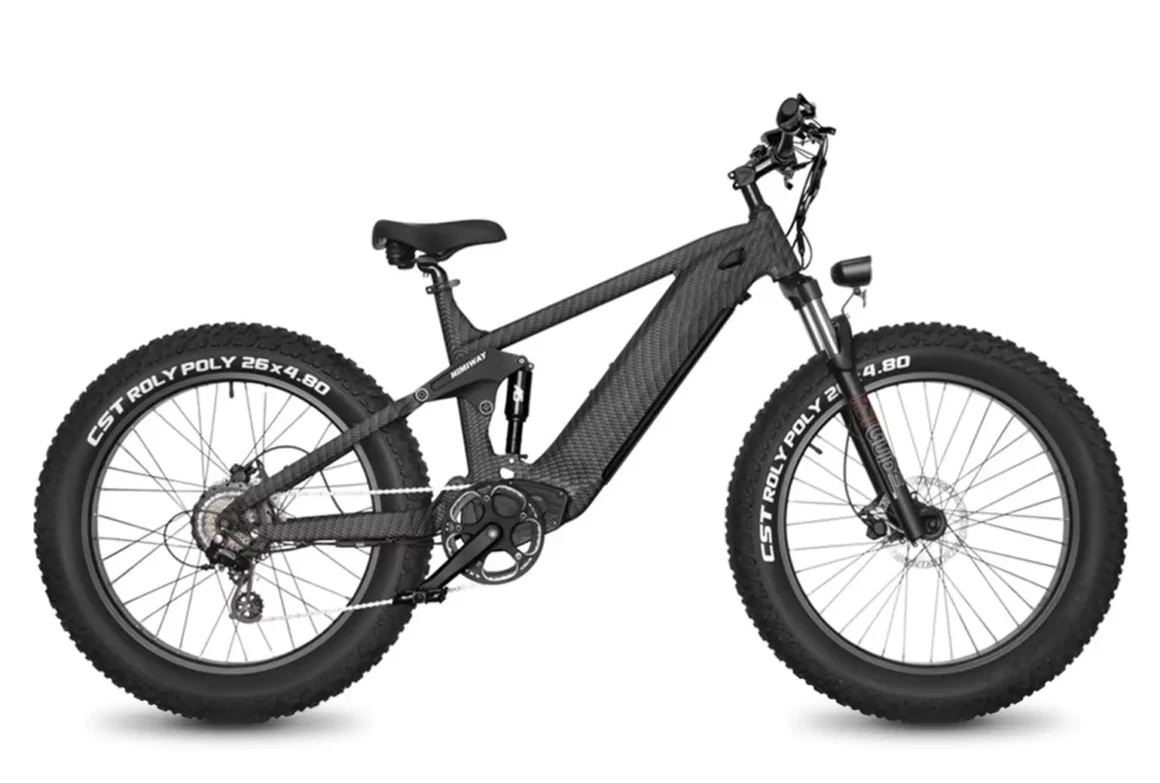
Himiway Cobra
What We Like
- Peppy 750W rear hub motor for big but controllable power
- 80 mile range thanks to the large 960 Wh battery and torque sensor
- 190mm of travel, 4 bar linkage rear suspension makes for a cushy ride
- Designed and built for overlanding, hunting, and outdoorsmen
What We Don't Like
- Not suited for riders shorter than 5' 5", with a 32-inch frame height
- Mid-level brand components
- Range may decrease based on terrain and cargo weight
Overview of the Himiway Cobra
Introducing the Himiway Cobra, a class-leading, affordable overlanding, hunting, and off-roading fat-tire e-bike. With its powerful 750W rear hub motor, large 960 Wh in-tube battery, and dual suspension system, the Cobra delivers an agile, fast, powerful, and fun riding experience. Designed for off-road touring and wilderness exploration, this e-bike disrupts the market with its affordability and impressive features.
Thanks to its high-torque motor (86Nm), the Cobra can quickly accelerate to 20 mph on throttle and up to 25 mph on pedal assist. The dual suspension system and fat tires provide excellent off-road handling, making it a super-nimble and comfortable choice for overlanding and cross-country riding. The bike’s potential maximum payload of 400 lbs makes it invaluable if you require ample cargo capacity for hunting or camping in the middle of nowhere!
Bottom Line
The Himiway Cobra is an extremely versatile and powerful full-suspension fat-tire e-bike designed for off-road enthusiasts, hunters, and overlanding adventurers. With its affordability, impressive payload capacity, and stylish design, the Cobra is a very compelling option.
While durability concerns and a limited warranty should be considered, the Cobra’s overall performance and features make it a standout choice in its price range.
If you’re searching for an e-bike that can easily handle challenging terrains and provide a premium off-road experience, the Himiway Cobra should be at the top of your list.
Best Long-Range Fat-Tire E-Bike
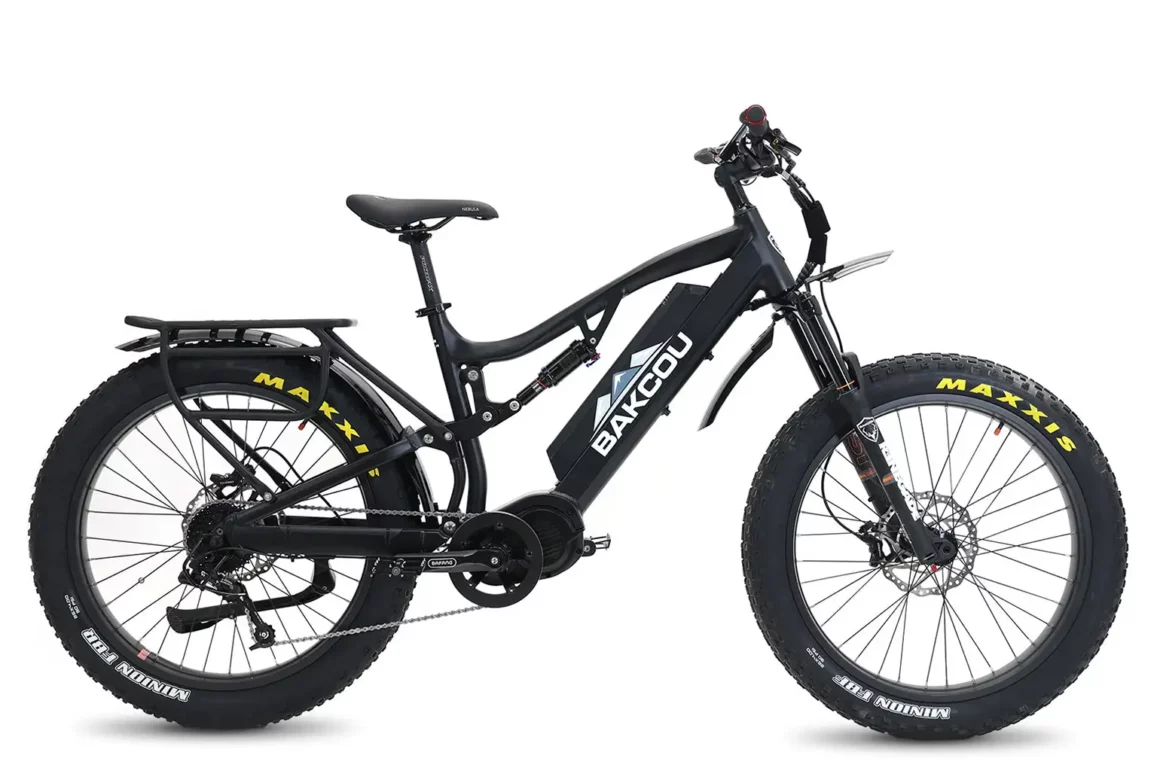
Bakcou Storm
What We Like
- Obviously the long range of 82 miles per charge
- The high-quality Bafang M620 Ultra smart torque sensing motor
- The massive power of the 750W motor, configurable to 1,000W continuous (1,500W peak)
- Street-legal at 20 mph, but can reach 35+ mph in unlimited mode
- Four battery options allowing riders to customize their range
What We Don't Like
- Heavier at 82 lbs with biggest battery installed
- The half-exposed battery isn't as streamline as some in-tube e-bikes
Overview of the Bakcou Storm
The Bakcou Storm is a big, dual-suspension all-terrain e-bike designed for serious off-roading. With its powerful Bafang Ultra mid-drive motor, providing up to 160 Nm of torque, and a dual-suspension system featuring RST Renegade air suspension and Rockshox Monarch rear shock, as well as 4-inch Maxxis Minion fat tires, the Storm is built to tackle challenging terrains in its sleep. It offers a nearly perfect combination of power, comfort, and durability.
With four battery options, you can choose the capacity that best suits your needs, ranging from 840 Wh to 1,200 Wh. The mid-drive motor, rated at 1,000W, can be switched to 750W for street-legal use, reaching a top speed of 20 mph. Getting bored? Getting off the streets? Kick it up to unlimited mode to reach break-neck speeds of 35 mph!
Bottom Line
The Bakcou Storm is a formidable long-range fat-tire e-bike designed for seeking off-road rides that few have ever experienced. With its powerful motor, dual-suspension system, and versatile battery options, the Storm caters to the adventurous spirit within you that’s begging to be unleashed.
While considerations like weight and durability should be noted, the Bakcou Storm’s overall performance, range, and robust design make it an excellent choice for confidently exploring challenging terrains. If you’re looking for a street-legal e-bike that can handle off-road shenanigans with extended range, the Bakcou Storm is a top choice.
Himiway Zebra
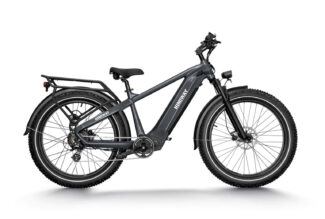
The Himiway Zebra secures a second-place position among long-range fat-tire e-bikes, offering a powerful 750W motor, upgraded design, and impressive 60-80 mile range at an affordable price. With features like hydraulic brakes, integrated lighting, and a robust frame supporting a payload of up to 400 lbs, the Zebra caters to a wide audience.
However, its handling of off-road terrain is limited, and the bike’s aesthetic might be considered a bit dated compared to its counterparts. The Zebra is still a very commendable choice for long-distance urban biking and commuting but falls short of the Backou Storm’s top-tier performance and sleek design.
Best Fat-Tire E-Bike for Hunting
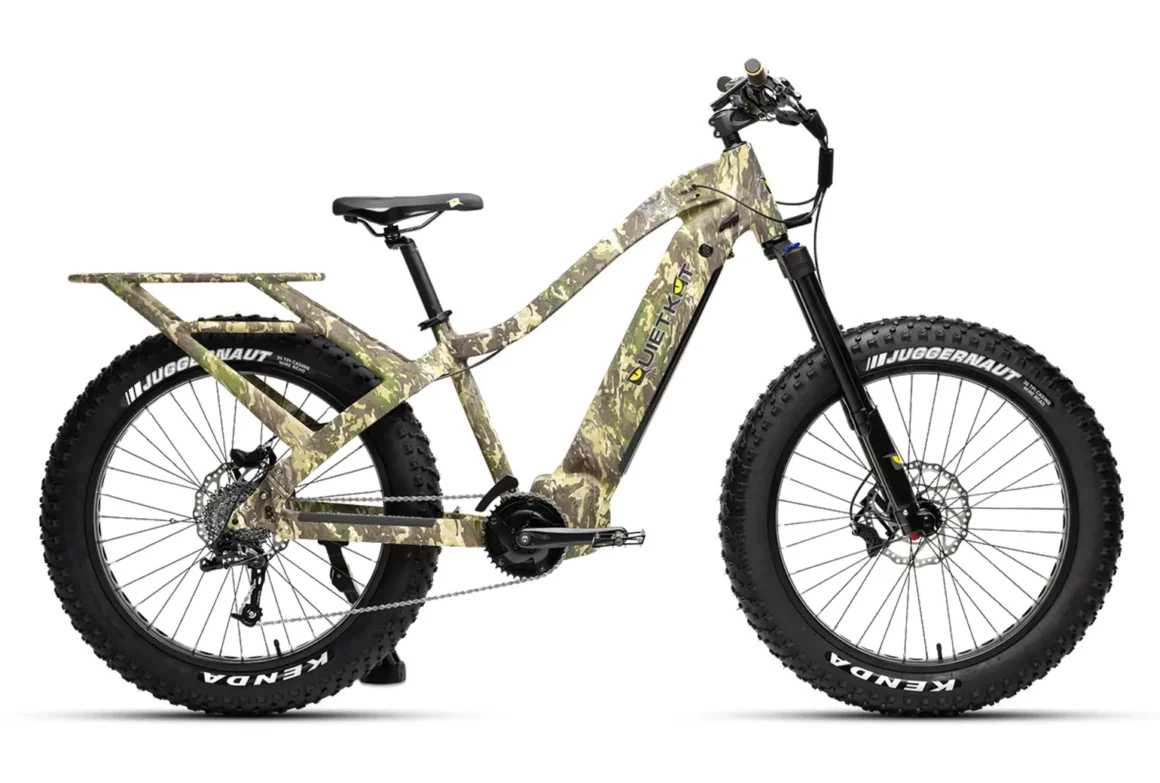
Apex Pro
What We Like
- Powerful 1,000W motor with quiet operation
- Sturdy build that’s designed for backwoods terrain
- 150mm travel front suspension makes overlanding a breeze
- Built-in rear cargo rack not only looks cool, but hauls a ton of weight
- Lifetime warranty on the frame
What We Don't Like
- Limited range of 24-48 miles means shorter trips out and back
- Higher starting price at around $5,000 might put it out of range for some buyers
Overview of the QuietKat Apex Pro
The QuietKat Apex Pro delivers a powerful and nearly silent riding experience. Tailored for hunters and outdoorsmen, this e-bike boasts a robust build, a 1,000W mid-drive motor, and 4.5” fat tires for tackling rocky and muddy backwoods terrain with ease.
With the Apex Pro’s nearly silent 1,000W motor, it’s an ideal choice if you’re aiming to maintain a low profile in the deep woods while hunting. Take comfort in the bike’s sturdiness and versatility in handling various terrains with 150mm travel front suspension and four-piston hydraulic disc brakes!
Bottom Line
The QuietKat Apex Pro is a premium fat-tire e-bike for hunting and outdoor enthusiasts seeking a reliable companion for off-road adventures. While its range may be a limiting factor for some, the e-bike excels in motor power, riding comfort, and durability. With its sturdy build, cargo-carrying capacity, and lifetime warranty on frames, the QuietKat Apex Pro should not be overlooked.
More options for hunting e-bikes...
Best Urban Fat-Tire E-Bike
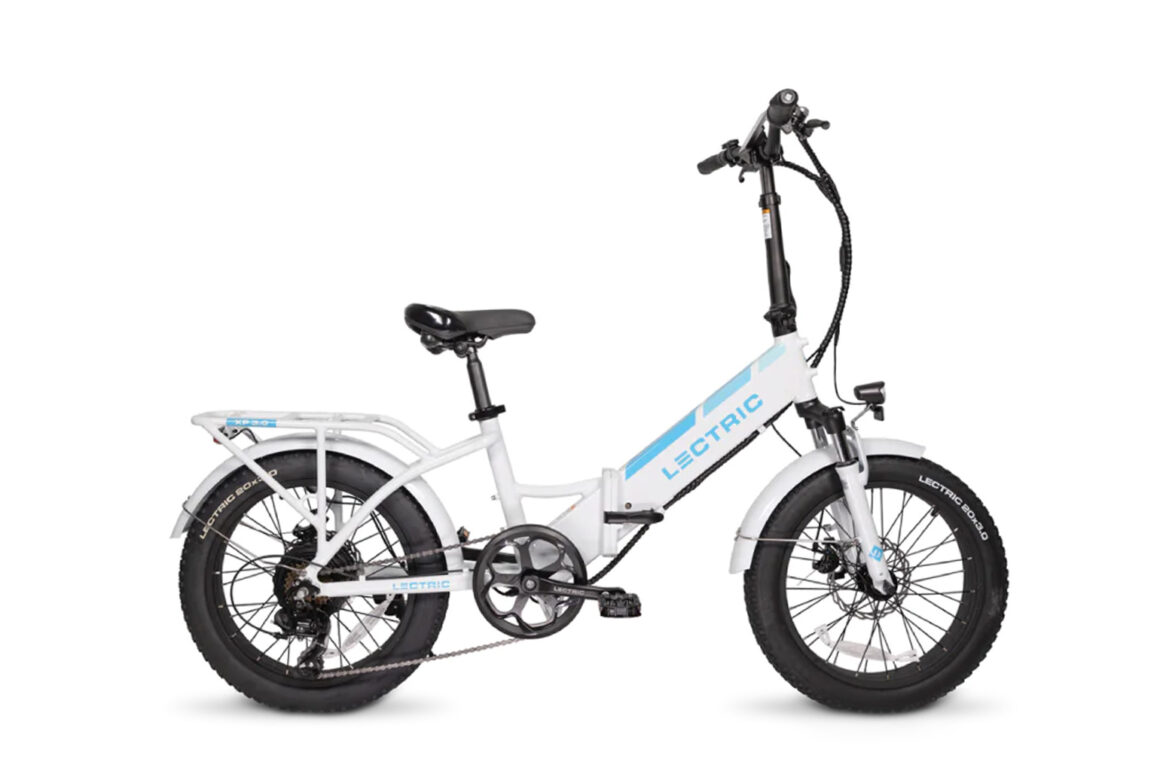
Lectric XP Step-Thru 3.0
What We Like
- Good range of up to 65 miles
- Integrated lights help with visibility in high traffic areas
- Rider is in a comfortable upright riding position
- Foldable and compact design for easy storage
- Wide variety of racks, bags, seats, and accessories available
What We Don't Like
- Hefty weight of 64 lbs may make it tough to carry for some
Overview of the Lectric XP Step-Thru 3.0
The Lectric XP Step-Thru 3.0 stands out as a compact, foldable, and powerful urban fat-tire e-bike. Its foldable design makes it your new BFF for RV-ing, camping, or even exploring local areas. The XP Step-Through 3.0 has a unique passenger-carrying option through a 10 mph limiter, so you can safely take a friend along for the ride!
Equipped with a powerful 500W rear-hub motor and an impressive range of up to 65 miles, the Lectric XP Step-Thru 3.0 offers the perfect blend of speed and coverage. And, the compact, foldable design with the integrated lights adds to its utility, including those late-night treks to 7-11. (Yeah, we know about those).
Bottom Line
The Lectric XP Step-Thru 3.0 is the perfect urban fat-tire e-bike that excels in providing a versatile and extremely comfortable riding experience. With its impressive range, foldable design, and safe passenger-carrying option, it aces a range of scenarios, from local errands to leisurely camping trips.
While its weight may limit its use for some types of commuting, the e-bike’s unique features, nearly silent operation, and stylish looks make the Lectric XP Step-Thru 3.0 a primary choice if you’re seeking a powerful and adaptable e-bike for thrashing the urban jungle.
Best Fat-Tire E-Bike for Seniors
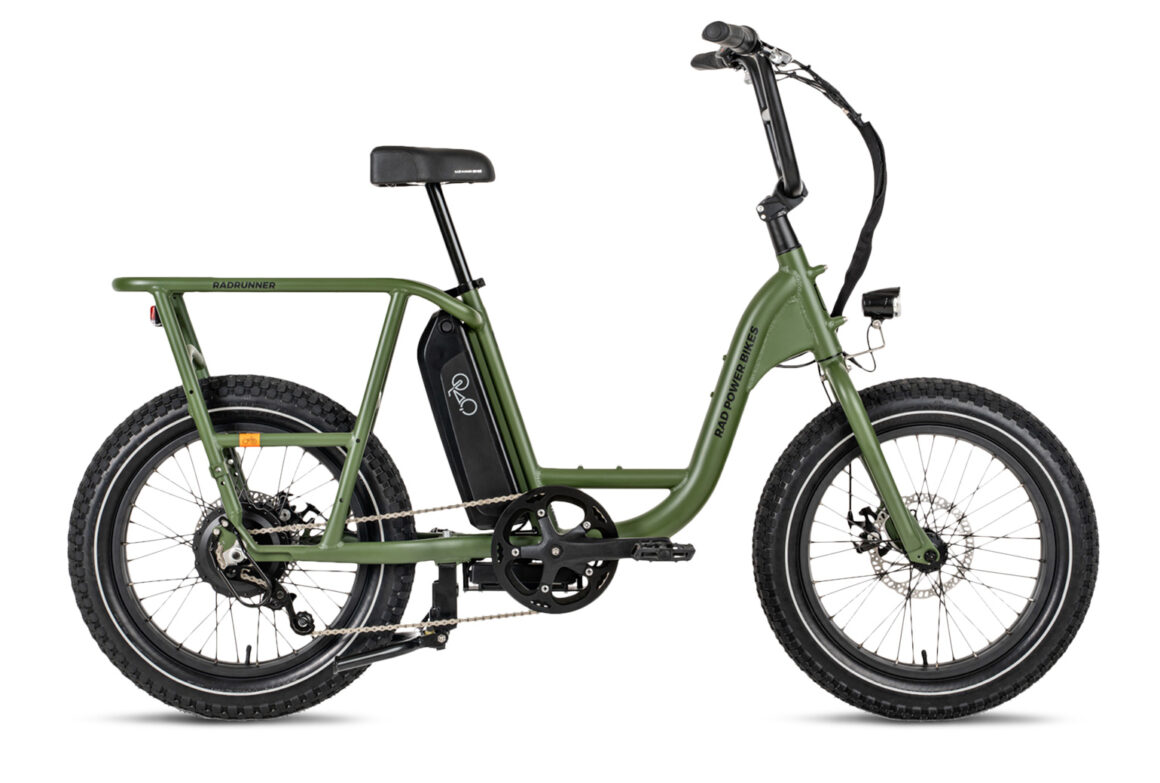
RadRunner 2
What We Like
- The step-through frame makes mounting and dismounting easy
- Extra comfy saddle provides much needed cushion for a comfortable ride
- Affordable compared to premium cargo bike alternatives
- Over 330 total configurations for customization
- Durable and low-maintenance
What We Don't Like
- Relatively short range for its battery capacity
- We think a suspension fork would make for a smoother ride
- Limited warranty of one-year
Overview of the RadRunner 2
The Rad Power Bikes RadRunner 2 steps up to the plate as a standout choice for seniors seeking a simple, reliable, comfortable, and versatile electric utility bike. With its easy-to-mount step-through frame, moped-style seat, and a focus on comfort, this e-bike is everything an older rider needs.
While the RadRunner 2 lacks some of the features in premium cargo bikes, its affordability and array of customization options make it an excellent value. The no-frills styling, extreme durability, and low-maintenance design not only mean you can rely on it to provide you with years of service but also, this e-bike will save you more of that green stuff in the long run.
Bottom Line
The Rad Power Bikes RadRunner 2 is an ideal fat-tire e-bike for seniors, offering a comfortable and easily accessible riding experience. With a focus on simplicity, versatility, and senior-friendly features, this e-bike is an affordable alternative to premium cargo bikes.
While its range and speed have limitations, the RadRunner 2 not only meets the needs of seniors for commuting, family rides, and running errands, it soars far above them!
Need More Options?
Electric Fat-Tire Bikes 101
Alright, let’s take a step back as we dive into the basics of fat-tire e-bikes. With their beefy tires, these bad boys are like the off-road SUVs of the electric biking world. Hop on as we uncover why they’re stealing the spotlight and also take a moment to explore a few of their quirks (after all, everything’s got a few of ’em).
Why Fat-Tire E-Bikes?
Picture this: you’re cruising through sandy beaches, snowy trails, or even muddy terrains, and your fat-tire e-bike is eating it all up like a champ. These bikes aren’t just about how awesome they look; they’re the bad boys of e-bikes.
Those fat treads of theirs absolutely scream stability, control, and comfort; they give you the confidence to tackle most terrain, from pavement, loose sand, and grave, to snow. And did we mention the comfort? Because yeah, that word is an understatement; these suckers are super comfy…
Pros and Cons of Electric Fat-Tire Bikes
Why they rock the e-bike house:
- These bikes are off-road beasts, turning challenging terrains into their playground.
- Wide tires act like a snowshoe, distributing the weight of the bike across the ground’s surface preventing you from sinking deep into the sand or snow..
- Ever dreamed of riding on clouds? Well, fat-tire bikes offer a ride so cushy, bumps will start to feel invisible. Because they are larger than most tires, you can ride them at lower tire pressure causing them to act like a mini suspension system.
The downsides:
- They're a bit on the heavy side. The wider tires weigh more, and the wider rims that support them weigh more than most rims..
- While they conquer off-road like champs, don't expect Formula 1 speeds on the smooth lanes. The wide knobby tires provide great grip, but also greater rolling friction (and noise).
- Agility and sharp cornering take a hit when riding a fat-tire bike. Don’t expect to be turning on a dime. These guys are the school buses of bikes.
FAQs About Fat-Tire E-Bikes
Q: Are fat-tire e-bikes harder to pedal?
A: Alright, let’s take a step back as we dive into the basics of fat-tire e-bikes. With their beefy tires, these bad boys are like the off-road SUVs of the electric biking world. Hop on as we uncover why they’re stealing the spotlight and also take a moment to explore a few of their quirks (after all, everything’s got a few of ’em).
Q: How long do e-bike fat tires last?
A: Generally, fat-tire e-bikes have more durable tires designed for longevity. The lifespan of these tires can vary based on factors such as riding conditions, maintenance, and the quality of the tires. On average, riders can expect thousands of miles of use before considering tire replacements.
Q: Are fat tire e-bikes a good choice for seniors?
A: The short answer is yes. Fat-tire e-bikes can be an excellent choice for seniors due to their comfortable design, stability, and ease of use. The wider tires provide enhanced stability, and certain models with step-through frames and comfortable seating options make them well-suited for older riders.
What to Look for When Shopping for Fat-Tire E-Bikes
When selecting the perfect fat-tire e-bike, you need to consider the features most important to you. Unlike traditional bikes, fat-tire e-bikes are designed for varied terrains, offering a unique riding experience.
When shopping for your ideal fat-tire e-bike, focus on these essential factors:
- Tires
The defining feature of fat-tire e-bikes is, of course, their wide tires. Look for a tread pattern that suits your intended riding terrain. If you plan to ride off-road a lot, look for tubeless or puncture-resistant tires. - Motor Power and Performance
A powerful motor is crucial for an electric fat-tire bike. Consider the motor’s wattage; it’ll determine the bike’s ability to navigate different riding scenarios. Higher wattage usually translates to better performance in more challenging terrains. - Range
Consider the battery’s range, as it will dictate how far you can ride on a single charge. Opt for a fat-tire e-bike with a battery that aligns with your riding ambitions for extended rides. Furthermore, electric fat-tire bikes with a torque sensor can be more efficient, offering a great use of the power available. - Comfort Features
Since fat-tire e-bikes are often chosen for their comfort, prioritize features such as ergonomic design, adjustable seats, and suspension systems.
Remember these factors, and you’ll be well-equipped to choose a fat-tire e-bike that suits your riding style and preferences, ensuring a confident, thrilling, and comfortable experience on every ride.


